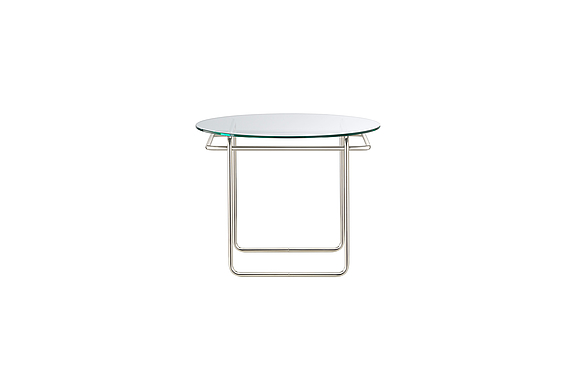
K40
Coffee table
Bauhaus Original
Marcel Breuer
1927/28
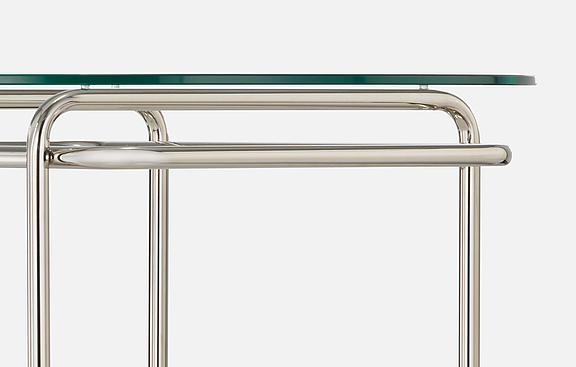
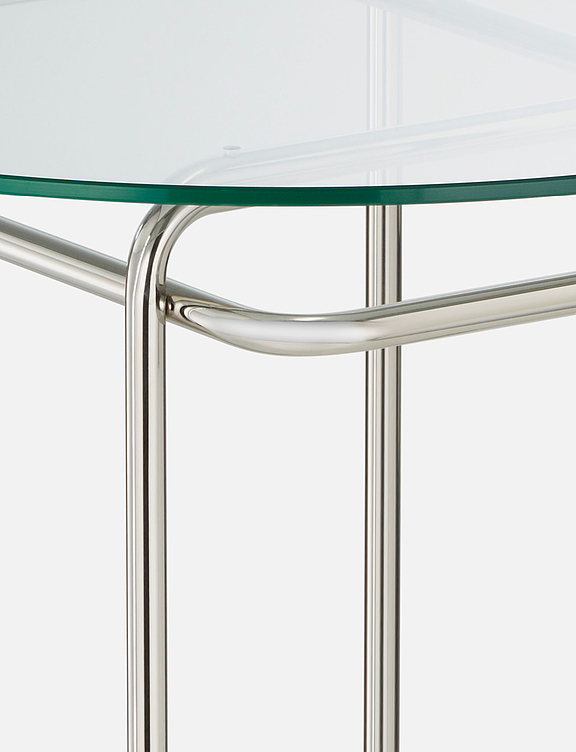
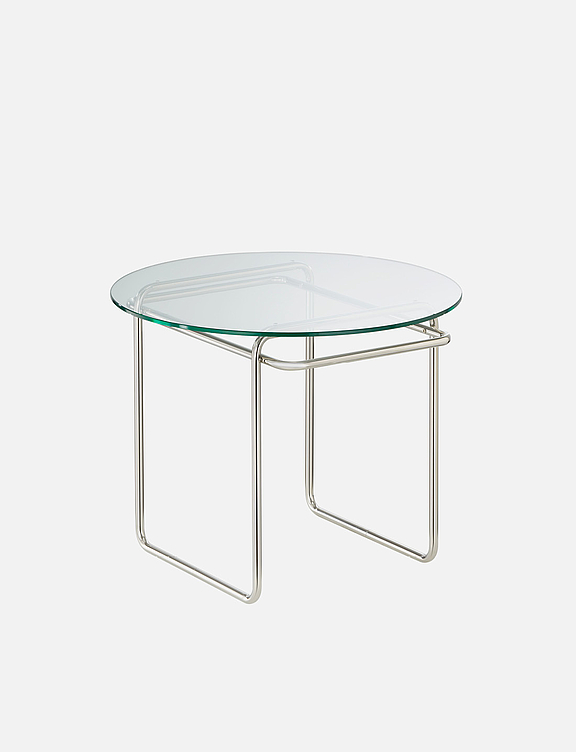
K40
Delicate frame and floating upholstery
Frame
Nickel plated steel tube
Tabletop
Crystal glass, 10 mm thick
Dimensions (cm)
Diameter: 80
Height: 60
A nickel-plated tubular steel frame with a seat and backrest out of buttoned leather. If minimalism is a key to understanding modernism, Marcel Breuer has illustrated an abstract principle with the F40 sofa. The F40 sofa is all silhouette, all structure, all idea. The appeal of the design from 1931 lies in the contrast between its delicate frame and rather sturdy upholstery. But even the upholstery looks like a sketch, as if Breuer had taken it directly from the drawing board into the third dimension.
The F40 sofa emphasises stark contrasts and reverses the relationship between “post” and “lintel”. The base is no more than a bent steel tube, a line in space, so to speak, which is flattened at its ends (“tube aplati”). Topped by floating upholstery. Modern architecture achieved a similar effect with buildings that seem to float in space – often by placing a white structure on a dark base. Or with buildings that seem to rise from the ground like inverted pyramids, such as the Whitney Museum of American Art (1966) in New York, which Breuer designed together with Hamilton P. Smith on Madison Avenue. The F40 also embraces this principle. The result is a distinctly architectural piece of furniture that will stand out in any ambience. Not by dominating the room, but due to its sheer presence.
Marcel Breuer presented the F40 sofa at an exhibition in Berlin in 1940. Based on a photograph, Tecta later undertook to produce a faithful re-edition of the sofa. A Volkswagen engineer was commissioned to create a digital image that enabled the reconstruction and accurate recreation of the F40. The F40 was also awarded the original Bauhaus label designed by Oskar Schlemmer.
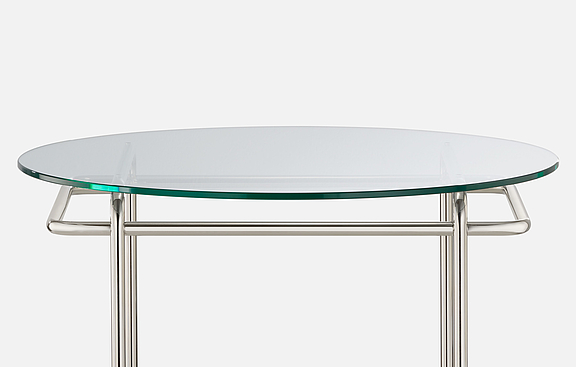
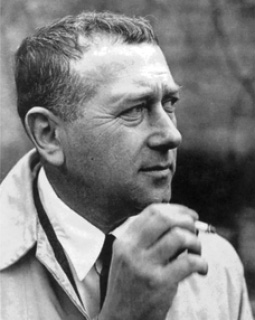
Perfection of construction and detail. Of course, the first thing we associate with Bauhaus master Marcel Breuer is one material: tubular steel. And one principle: the cantilever chair, which sparked modern furniture design. “Humankind was freed from the tethers of rigid sitting to enjoy the freedom of the floating seat. The cantilever chair was a symbol of its time.” But this does not really do justice to Marcel Lajos (“Lajkó”) Breuer (1902-1981). What he really pursued was research into the essence of objects: what should, what can a modern piece of furniture do today, was the Bauhaus question.
In 1925, Breuer became head of the furniture workshop in Dessau as a “junior master”. The year before, he had already postulated his definition of contemporary furniture. Although he attached great importance to details, Breuer favoured the precision of thinking over formal aspects. “There is the perfection of construction and detail, along with and in contrast to simplicity and generosity in form and use,” he wrote in an essay outlining his philosophy.
His role in popularising tubular steel for furniture design may also be due to his being one of the first to realise how dynamic our lives had become, demanding equally light and flexible solutions. The cycling enthusiast also embraced the latest trends in architecture, industry and design for a new zeitgeist. “I have specifically chosen metal for these pieces of furniture to achieve the characteristics of modern spatial elements,” explained Breuer. “The heavy upholstery of a comfortable armchair has been replaced by tightly stretched fabric surfaces and a few lightweight springy cylindrical brackets.”
In addition, the construction was no longer hidden, but flashing chrome became a visible part of the design. Cantilever chairs were bolted, not welded, functions stacked and colour-coded. The result was a dematerialised floating appearance and a new spirit of space. The cantilever chair meant a liberation from the thousand-year-old model of rigid throne-like sitting. It was the implementation of the functional, kinetic and constructive counter-principle. This kinetic line, the dawn of the modern era, can still be traced to the young Bauhaus designers today.